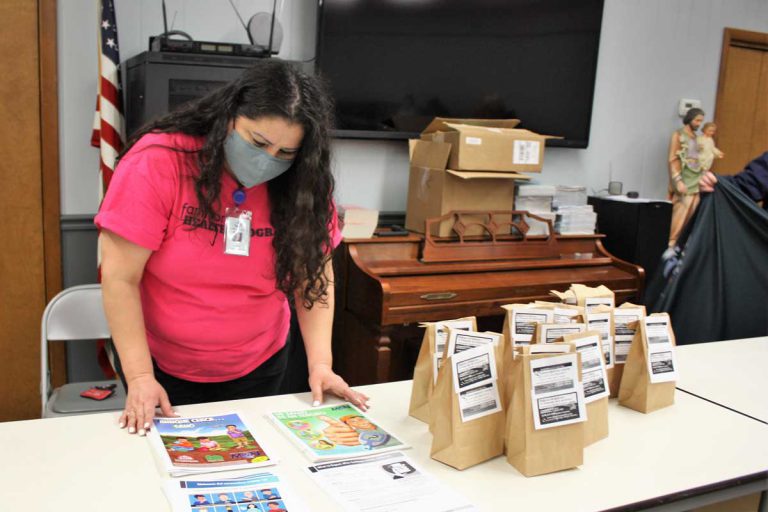MURPHYSBORO – Some who work for clinics targeting vulnerable, hard-to-reach populations say they would like to play a bigger role in the rollout of COVID-19 vaccines. But those clinics are still waiting to get access to doses.
Karla Grathler is the coordinator of the Farmworker Health Program at Shawnee Health Service, a community health center in southern Illinois. She says many essential workers in her area, including farmworkers, face barriers to getting the COVID-19 vaccine through the options currently available, because they lack access to technology, reliable information in their native languages, and transportation.
To address the issue, Grathler has been working with the Illinois Department of Public Health to organize pop-up vaccination clinics in an effort to bring the vaccines closer to home. The efforts are part of a pilot program being run out of the Illinois Department of Public Health’s Office of Minority Health.
Pop-up vaccination clinics are a step toward creating more equitable access to the vaccine, Grathler says, but they require a lot of coordination and planning. She says it would be easier if her clinic could get their own vaccine doses that they could administer themselves.
“My hope is that once vaccines become more available, [they will] give us directly the resources,” says Grathler. “We already have the personnel.”
Help could be on the way soon for community health centers that are still waiting to receive vaccine shipments.
The Biden administration launched a program last month aimed at getting vaccines shipped directly to community health centers across the country — starting with 250 clinics, including nine in Illinois. An updated list posted last week on the website of the U.S. Health Resources and Services Administration showed an expanded list of 35 community health centers in Illinois, including Shawnee Health Service.
Also known as federally qualified health centers — or FQHCs — Illinois’ 52 community health centers see an estimated 1.5 million patients every year, says Cyrus Winnett, interim president and CEO of the Illinois Primary Health Care Association.
Winnett says that even prior to the Biden administration’s program, most community health centers in Illinois were already administering vaccines through arrangements with their local health departments. And earlier this month, the state of Illinois announced it would build on the federal partnership by directly sending vaccines to five community health centers, increasing the number of vaccines “going to underserved, disproportionately impacted communities who need the vaccine the most.”
Vaccine supply issues are preventing more vaccines from getting to more community health centers, with the state in a tough situation having to determine how to direct the limited number of doses it’s receiving to the places that need it the most, Winnett says.
“It’s been a tough equation to solve,” he says. “And unfortunately, there are scenarios in which some areas are not receiving what they need.”
With vaccine supplies ramping up, Winnett says he’s hopeful supply will begin to outweigh demand and the problem will get resolved.
Grathler says she’s eager for Shawnee Health Service to receive vaccines and be able to administer them to the people in their area, including the more than 300 farmworkers they serve every season. But until the doses arrive, she’ll continue to find other means of helping the workers get access to the vaccine.
“They’re really such a high-risk population,” Grathler says.
The passage of the latest COVID-19 relief package is also welcome news for community health centers, Winnett says. The package includes $7.6 billion for providers across the U.S., making it one of the single largest investments in community health centers in the nation’s history.
The funding will be used for COVID-19 prevention, testing, treatment, outreach, vaccination, and other response efforts. It includes $1 billion for the creation of a workforce development program that offers scholarships and loan repayment to address workforce shortages and disparities in communities of color.
Community health centers, which see patients regardless of insurance or ability to pay, were established when Congress passed the Civil Rights Act in 1964. Winnett says they were created to fill healthcare gaps in underserved communities, which were predominantly Black at the time.
“They have grown to become pillars of, not only health care information, but also access in the communities that they serve,” Winnett says.
Because the COVID-19 pandemic has disproportionately affected Black and Latino communities, Winnett says community health centers have a pivotal role to play in vaccine distribution, “ensuring that there’s equity in the process.”
Christine Herman is a reporter at Illinois Public Media. Follow her on Twitter: @CTHerman

